Posts Tagged: integrated pest management program
Lawn-pocalypse! Surviving Drought
Ah, summer! The season of sunburns, pool parties, and… lawn droughts. If your once lush, green carpet now looks like a crunchy brown doormat, you're not alone. Let's dive into why your yard is staging a dramatic death scene and what you can do to...

Bermuda grass and weeds overtaking drought stressed turf grass.
The Katydid Nymph Did
The katydid nymph did. It did appear in May. The UC Statewide Integrated Pest Management Program (UC IPM) tells us that katydid nymphs appear in our gardens in April or May. This little nymph was right on time, barely, as it surfaced in our...
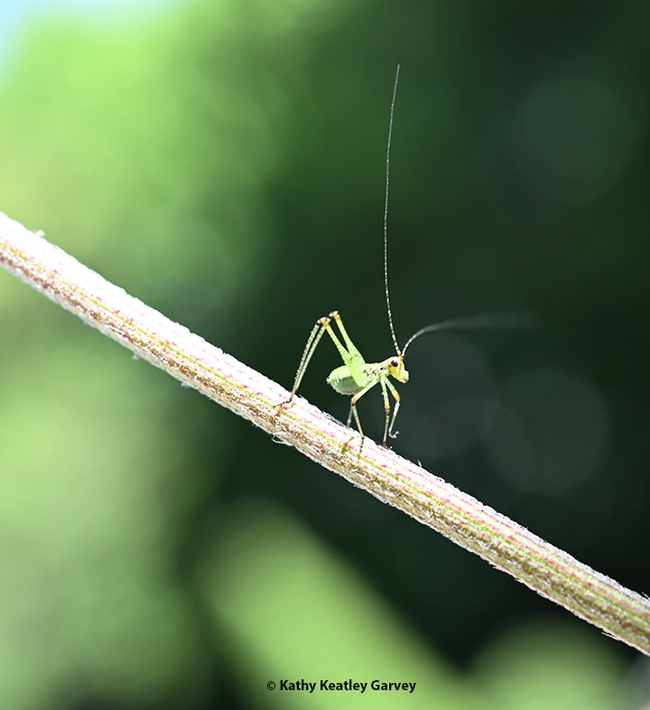
A katydid nymph, its long threadlike antennae upright, descends a stem in a Vacaville garden. (Photo by Kathy Keatley Garvey)
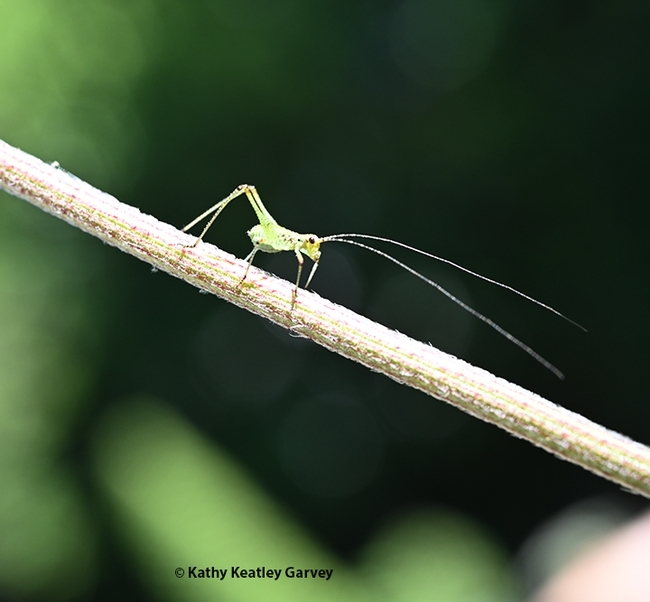
A katydid nymph, its long threadlike antennae upright, descends a stem in a Vacaville garden. (Photo by Kathy Keatley Garvey) The katydid nymph lowers its antennae and proceeds along the stem. (Photo by Kathy Keatley Garvey)
The katydid nymph lowers its antennae and proceeds along the stem. (Photo by Kathy Keatley Garvey)
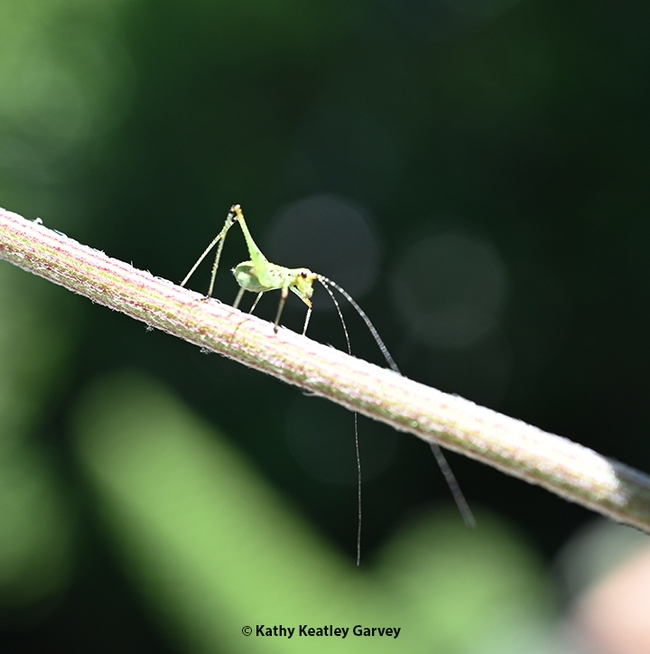
Antennae down, the katydid nymph continues its descent. (Photo by Kathy Keatley Garvey)
Frank Zalom: Lifetime IPM Achievement Award
His name is synonymous with integrated pest management (IPM) and his achievements during his 45-year career are nothing short of spectacular. So it's no surprise that UC Davis distinguished professor emeritus Frank Zalom, internationally...
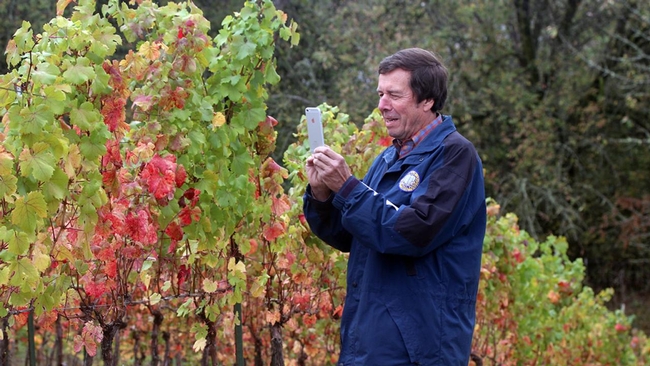
UC Davis distinguished professor emeritus Frank Zalom takes an image of a Willamette vineyard showing grapevine red blotch virus in the fall.
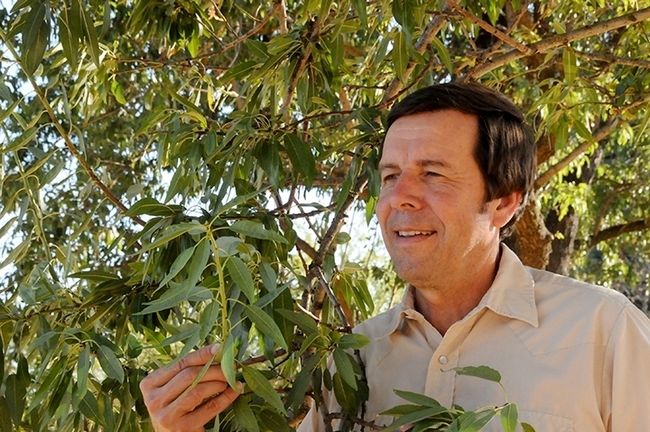
UC Davis distinguished professor emeritus Frank Zalom is highly honored for his work on almonds. (Photo by Kathy Keatley Garvey)
Spiked Forelegs of a Praying Mantis: There Is No Escape
A praying mantis, an incredible ambush predator, can lie in wait for hours for its prey. Often it's so camouflaged that it totally blends in with its habitat. It can rotate its head 180 degrees--and nothing, it seems, can escape its view. Praying...
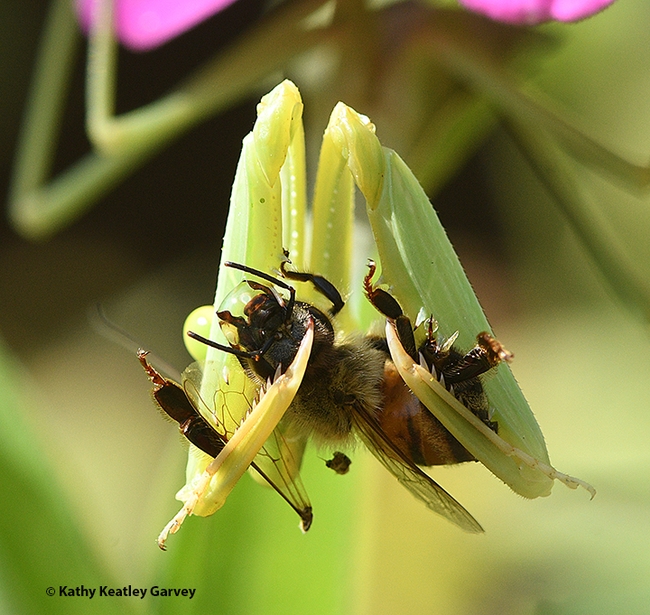
This praying mantis, Stagmomantis limbata, has just ambushed a honey bee and is grasping it in its spiked forelegs. There is no Harry Houdini-kind of escape. (Photo by Kathy Keatley Garvey)
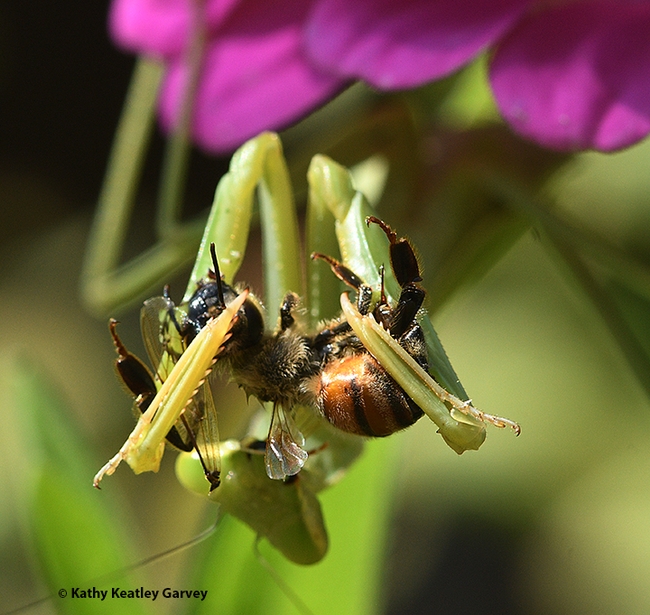
Death grip. With its two spiked forelegs, the praying mantis firmly grasps the honey bee. Photo by Kathy Keatley Garvey)
Those Goofy-Looking Cartoon Characters Called Crane Flies
Back in April of 2021, we wrote: "They're out there, and you don't have to crane your neck to see them." The topic: crane flies. They're often mistakenly called "mosquito eaters" or "mosquito hawks." They're neither. They're members of the family...
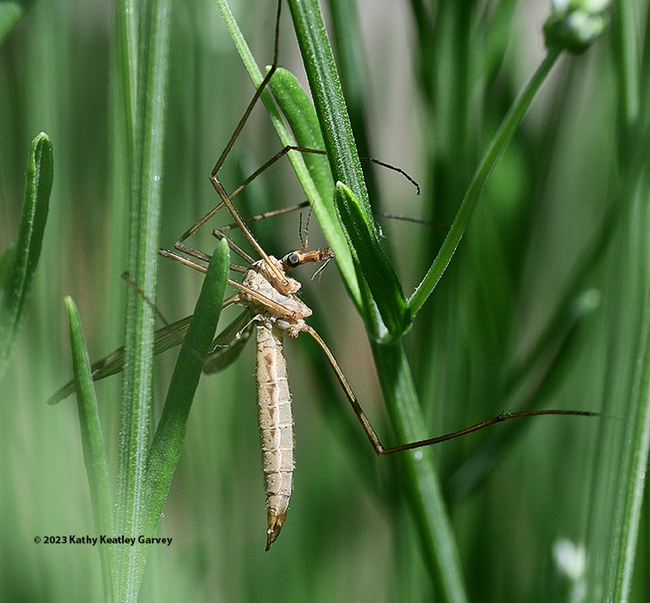
A crane fly resting in a Spanish lavender bed in Vacaville, Calif. Crane flies are sometimes called "mosquito eaters," but they do not eat mosquitoes. (Photo by Kathy Keatley Garvey)
